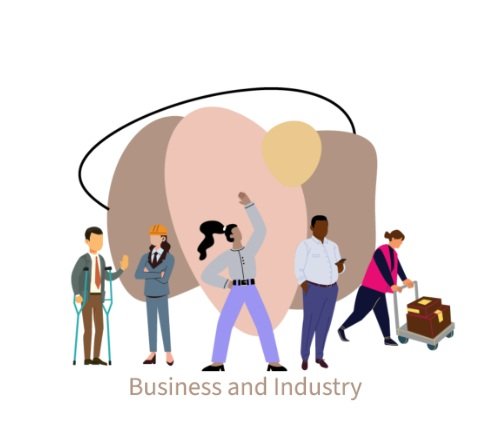To join the Business and Industry Sector, please type your email in the subscription bar provided below.
Have a question? Feel free to Contact Us!
The Business and Industry Sector is co-led by Tonya Williams from Garmin and Missy Barnett from Corporate Fitness Works.
KCPA Plan Strategies and Tactics for Business and Industry
The Business and Industry sector includes organizations that offer goods and services, as well as those related to manufacturing goods.
The success of a business is largely determined by the overall well-being of its employees, and workplace initiatives aimed at reducing health risks can have a significant positive impact. One crucial risk factor that is often associated with poor work performance is a lack of physical activity. By taking a leadership role in promoting physical activity, businesses can address this issue and ensure their employees are healthy and productive.
Strategy 41
Businesses should provide employees and their families opportunities and incentives to adopt and maintain a physically active lifestyle.
Tactics
1. Adopt policies and practices that support implementation of evidence-based programs and initiatives to promote physical activity in the workplace setting (e.g., CDC Healthy Worksite Initiative).
2. Create or enhance access to places and resources for employees to engage in physical activity before, during, and after work hours; combine with informational outreach activities.
3. Design safe and accessible workplace settings that encourage employee culture to incorporate physical activity into their daily routines regardless of work location.
4. Promote physical activity across multiple environments within the workplace setting, including the physical, psychosocial and cultural, and socio-economic environments.
5. Conduct periodic workplace-based health screenings that measure physical activity and fitness levels of workers. Include measures of fitness components that are relevant to the job types of the workers.
6. Provide resources necessary to support physical activity behavior adoption and maintenance among employees, including access to relevant expertise, evidence-based behavioral change programs, and well-qualified fitness and behavior change professionals.
Strategy 42
Businesses should engage in cross-sectoral partnerships to promote physical activity within the workplace, and such efforts should extend to local communities and geographic regions.
Tactics
1. Identify promising cross-sectoral partnerships that can promote physical activity within the workplace, community, and throughout society.
2. Develop a communication strategy to inform relevant constituents about these cross-sectoral partnerships to promote physical activity within the workplace setting.
3. Explore innovative methods to expand products, marketing, sponsorship, and other efforts to promote physical activity.
4. Collaborate with partners to develop and implement a plan for evaluating the effectiveness of workplace physical activity programs.
Professional and scientific societies should create and widely communicate/share a concise, powerful, and compelling business case for investment in physical activity promotion.
1. Ensure the business case addresses the needs of all workplaces (remote and/or in person), especially small and medium size businesses (100 or fewer employees and 101-999 employees, respectively). Ensure that the needs of organized labor, diverse populations, and low-resource populations are addressed.
2. Develop specific approaches to promoting physical activity and reducing prolonged sitting time that are appropriate for large, medium, and small sized businesses as well as workplaces with large numbers of lower income workers and workers of diverse racial and ethnic backgrounds.
3. Encourage businesses to invest in physical activity programming by providing them with documented business case language and approaches.
4. Identify, summarize, and share best practice policies, models, tools, and interventions for physical activity promotion and reduction of prolonged sitting in the workplace.
Strategy 43
Tactics
Strategy 44
Professional and scientific societies should develop and advocate for policies that promote physical activity in workplace settings.
Tactics
1. Create a policy resource that highlights applicable policy considerations and provides examples of best practices and resources for promoting physical activity in the workplace.
2. Support, recognize and promote organizations that are exemplary examples of innovative and best practices for promoting physical activity in the workplace.
3. Educate and engage business and industry leaders regarding their role as change agents to promote physically active and healthy lifestyles within the workplace and throughout all levels of society.
4. Develop and make available a toolkit that provides guidance on the process for policy implementation and enforcement in the workplace setting.
5. Promote employer-sponsored physical activity programs and healthy environments (physical, psychosocial and cultural, socio-economic) while protecting individual employees’ and dependents’ rights.
6. Recruit key business and industry leaders to play central roles in influencing their peers and other decision-makers in their communities and at Kansas City regional, and state levels.
7. Advocate for the integration of physical activity promotion in existing leadership development curricula in post-secondary education settings and continuing education programs for executives throughout the country.
Strategy 45
Physical activity and public health professionals should support the development and deployment of data collection and benchmarking systems that monitor physical activity in Kansas City workers and physical activity promotion efforts in the greater Kansas City area workplaces.
Tactics
1. Advocate for the development of data collection and benchmarking systems that include, at a minimum, the measurement of physical activity across types of occupation and industry; worker race and gender; and physical, psychosocial and cultural, and socio-economic environments.
2. Identify and partner with appropriate agencies on the data collection needs relative to physical activity among the Kansas City regional workforce.
3. Monitor actions, programs and initiatives that companies are implementing to promote physical activity and reduce prolonged sitting.
4. Provide organizational-level data collection, using environmental audits that assess workplace characteristics, physical, psychosocial and cultural, and socioeconomic environments.
5. Advance physical activity environmental assessment and improvement planning tools for workplaces to help companies build environments that support active, healthy living as a behavior.
6. Advocate for a KC regional longitudinal study and implementation of workplace physical activity programming, engagement, and outcomes.








